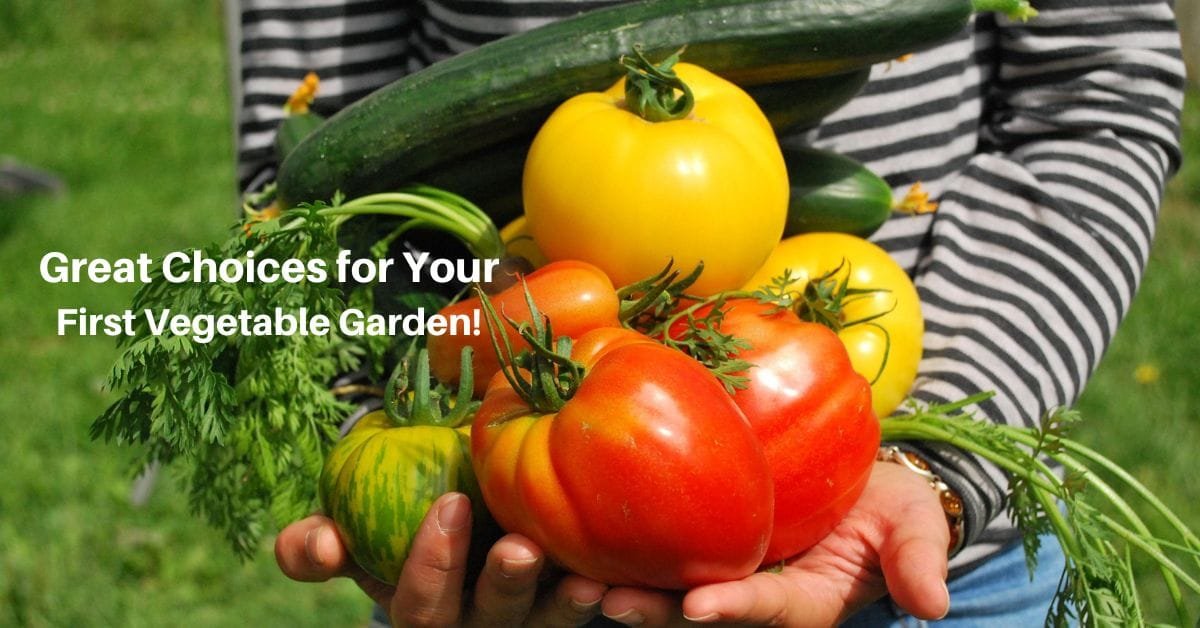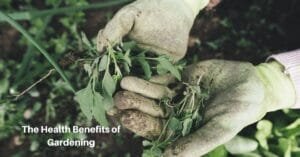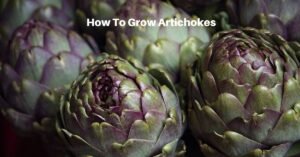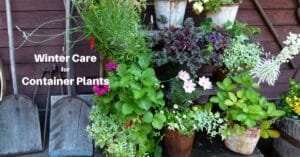If you’re green but want to become a green thumb, it’s great to start with vegetables that are easier to cultivate. By starting with plants like these, you’ll have more success and be able to enjoy gardening with less frustration.
Gardening doesn’t have to be intimidating; by selecting the right vegetables, even the most inexperienced gardener can achieve a thriving garden. You’ll build confidence and develop the skills needed for more complex gardening projects in the future.
If you’re ready to embrace the joy of growing your food, you’ve come to the right place! We’ll walk you through the easiest vegetables, why they’re ideal for novices, and some tips to ensure your garden flourishes.
Key Factors for Beginner-Friendly Vegetables
Not all vegetables are created equal when it comes to ease of growth. As a beginner, we’re sure you’d like to start with vegetables that have certain qualities:
- Low Maintenance: These plants don’t require constant attention, advanced techniques, or specialized tools.
- Rapid Growth: Vegetables that mature quickly provide instant gratification and keep you motivated.
- Pest Resistance: Hardy plants that can withstand common pests and diseases are less likely to frustrate you as you start.
- Versatility: Crops that can thrive in various climates and growing conditions make it easier to adapt to your environment.
You’ll also want to choose vegetables that match your garden’s specific conditions. Sunlight levels, soil type, and available space can significantly impact your success. For instance, leafy greens can thrive in partial shade, while sun-loving tomatoes need at least six hours of direct sunlight daily.
Radishes: A Quick and Rewarding Crop
Radishes are one of the simplest vegetables to grow, making them perfect for beginning gardeners. Their quick growth and minimal care requirements allow you to enjoy a harvest within as little as 25-30 days after planting. Radishes also thrive in small spaces, making them suitable for container gardening or tight garden beds.
Why Radishes Are Great for Beginners
- Rapid Growth: Seeing results quickly is motivating for novice gardeners. Radishes germinate in just a few days and mature rapidly.
- Easy Planting: Sow radish seeds directly into the soil without needing transplants. They grow well in both garden beds and pots.
- Low Space Requirement: Radishes can be planted close together, so they’re ideal for small gardens or balcony planters.
- Cool-Season Crop: They flourish in spring and fall, when temperatures are cooler, giving you two opportunities for planting each year.
Growing Tips for Radishes
- Soil Preparation: Ensure the soil is loose and well-drained to allow the roots to grow freely. Avoid overly rich soil; can lead to excess foliage rather than root development.
- Regular Watering: Keep the soil consistently moist, but avoid waterlogging, which can cause the roots to split.
- Harvest Early: Radishes left in the ground too long can become woody and lose their flavor. Harvest them as soon as they reach the desired size.
By starting with radishes, you’ll gain confidence and enjoy the satisfaction of a speedy harvest. Let’s move on to another beginner-friendly vegetable: lettuce.
Lettuce: Versatile and Fast-Growing Greens
Lettuce is another excellent option for novice gardeners because it’s adaptable and easy to care for. There are many varieties to choose from, such as romaine, butterhead, and loose-leaf. So lettuce can cater to your taste and culinary preferences!
Why Lettuce Is Beginner-Friendly
- Quick Maturity: Most lettuce varieties are ready to harvest within 30-45 days. Baby greens can be harvested even sooner.
- Continuous Harvest: By practicing cut-and-come-again harvesting, you can enjoy fresh greens throughout the growing season.
- Shade Tolerance: While lettuce grows best in full sun, it can also thrive in partial shade, making it suitable if you have less sunlight.
- Small Space Option: Lettuce grows well in containers, making it an excellent choice for urban gardeners.
Growing Tips for Lettuce
- Frequent Planting: Succession planting every couple of weeks ensures a steady supply of lettuce throughout the season.
- Watering: Lettuce needs consistent moisture to prevent it from becoming bitter or bolting prematurely. Use mulch to retain soil moisture and regulate temperature.
- Protection: Use row covers to shield lettuce from pests such as aphids and slugs, which can be common nuisances.
Lettuce is a satisfying and forgiving vegetable to grow, offering both beauty and function in your garden. Next, let’s explore the versatility and ease of growing green beans.
Green Beans: A Low-Maintenance Powerhouse
Green beans are an excellent choice for novice gardeners. They offer both high yields and minimal effort. Whether you prefer bush beans or pole beans, these versatile plants adapt well to different garden setups and climates. Their ability to grow quickly and resist pests makes them a dependable crop for beginners.
Why Green Beans Are Ideal for Beginners
- Simple Growth Requirements: Green beans thrive in well-drained soil with plenty of sunlight. They don’t require heavy fertilization or complex care routines.
- Variety of Options: Choose bush beans for compact spaces or pole beans for vertical growth, which can save space in smaller gardens.
- High Yields: Once they start producing, green beans offer a prolific yield throughout the growing season, ensuring a steady supply for your kitchen.
- Pest and Disease Resistance: Green beans are less prone to common garden pests and diseases. That’ll help keep your stress level down!
Growing Tips for Green Beans
- Support for Pole Beans: If you’re growing pole beans, provide sturdy supports such as trellises or poles for the vines to climb. This improves air circulation and ease of harvesting.
- Regular Harvesting: Pick beans frequently to encourage the plants to produce more. Letting beans mature on the plant can reduce overall yield.
- Spacing: Plant seeds directly into the soil, spacing them a few inches apart. Thin seedlings if necessary to ensure proper airflow.
Green beans provide a rewarding experience for beginners, combining ease of growth with substantial harvests.
Zucchini: A Bountiful and Resilient Crop
If you want abundant harvests with minimal effort, zucchini is the perfect choice. Known for its prolific growth and adaptability, zucchini offers a reliable crop that rewards beginners with large yields.
Why Zucchini Is Great for New Gardeners
- High Productivity: Zucchini plants are famously prolific, often producing more fruit than a single household can consume.
- Ease of Growth: Zucchini requires little maintenance beyond watering and occasional weeding, making it suitable for those with limited gardening experience.
- Adaptability: Zucchini grows well in most climates and is tolerant of varying soil conditions, provided it has good drainage.
- Pest Tolerance: While zucchini may occasionally attract pests like squash bugs, its resilience ensures healthy yields with basic care.
Growing Tips for Zucchini
- Space Requirements: Zucchini plants need ample space, as they tend to sprawl. Allow at least 3 feet between plants to ensure they have room to grow.
- Regular Harvesting: Harvest zucchini when they are about 6-8 inches long. This is when they have optimal flavor and texture. Leaving them on the plant for too long can result in oversized, less flavorful fruits.
- Pollination Support: Encourage pollination by planting flowers nearby to attract bees, or consider hand-pollinating flowers if natural pollinators are scarce.
With its low-maintenance nature and impressive yield, zucchini provides novice gardeners with a gratifying gardening experience.
Carrots: Sweet Rewards for Patience
Carrots are a classic choice for gardeners of all skill levels. They take a bit longer to mature compared to other beginner-friendly vegetables, but their ease of cultivation and versatility make them a top pick for novices.
Why Carrots are Great for Novices
- Minimal Maintenance: Carrots require little care beyond proper soil preparation and regular watering.
- Wide Adaptability: They thrive in many climates and can be grown in traditional gardens, raised beds, or even deep containers.
- Nutritional Value: Carrots are rich in vitamins and can be enjoyed fresh, cooked, or preserved for later use.
Growing Tips for Carrots
- Soil Preparation: Carrots need loose, sandy soil free of rocks or compacted areas to grow straight and uniform roots. Raised beds are particularly effective for achieving optimal conditions.
- Direct Sowing: Like radishes, carrots should be sown directly into the soil. Plant seeds thinly and cover them lightly with fine soil.
- Regular Thinning: Once seedlings are established, thin them to 2-3 inches apart to give each plant enough space to develop.
- Water Consistency: Ensure the soil stays moist throughout the growing period to prevent cracking or tough roots.
- Harvest Timing: Carrots are typically ready to harvest 60-80 days after planting, depending on the variety. You can test readiness by gently pulling up one or two to check their size.
Carrots are not only rewarding but also forgiving for first-time gardeners, providing an essential mix of challenge and satisfaction. They encourage patience, a crucial trait for any gardener to develop.
Starting a vegetable garden doesn’t have to be overwhelming. With easy-to-grow options like lettuce, radishes, zucchini, green beans, and carrots, new gardeners can enjoy the satisfaction of cultivating their own fresh produce. These beginner-friendly vegetables offer varying levels of simplicity, quick harvest times, and versatility in the kitchen.
By choosing the right crops, preparing the soil, and following basic care guidelines, even a novice gardener can create a thriving vegetable patch. Each success will build your confidence and foster a deeper connection to nature.
So, grab some seeds, roll up your sleeves, and get started on your gardening journey—your future self (and your taste buds) will thank you!









